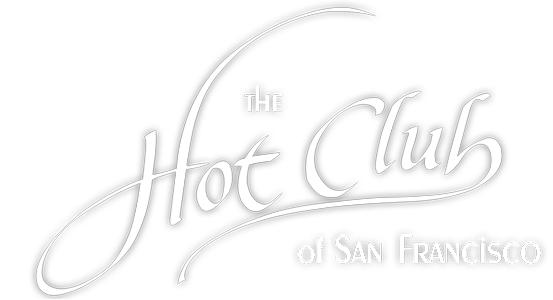Review: Hot Club of San Francisco's 'Cinema Vivant'
By Jim Morekis
While many folks were enjoying the Jazz Festival in the park Friday night, a smaller but just as enthused audience was enjoying the unique music/movie combo of the Hot Club of San Francisco's "Cinema Vivant" performance at the Lucas.
It's name a self-conscious reference to the legendary Hot Club of France, this West Coast ensemble indeed opened the show with a three-song homage to Django Reinhardt, godfather of the gypsy jazz genre and original Hot Club co-founder. Lead guitarist Paul Mehling is the main spokesman for the group and effortlessly commands the full range of sound from his instrument.
The Stephane Grappelli to Mehling's Django, violinist Eric Price was perhaps the true star of the show. His tasteful, versatile fiddling, even more than the Reinhardt-style guitar, carries the melodic load and lends that particular gypsy flair to the proceedings.
While the music was most enjoyable in and of itself, the main point of this show was to hear those vintage gypsy sounds accompanying a series of rare and altogether delightful classic silent films from roughly the same Django Reinhardt era.
The first film - and probably the audience favorite - was There It Is, a classic commingling of some of the key artistic elements of the late 1920s and 1930s, a time of enormous cultural fertility happening amidst the great global upheaval at the same time.
There It Is, made in 1928, combines surrealism and slapstick in the tale of a stereotypical Scottish detective (played by silent cinema renaissance man Charlie Bowers) attempting to solve the mystery of the "Fuzz-Faced Phantom," aided by his furry, insect-like companion MacGregor.
During a time of what we would consider drastically limited technical options in terms of special effects, director Harold Muller and technical wizard Bowers create a series of small cinematic miracles, mostly relying on an early form of stop-motion animation. We see wagons teleporting through walls, telephones that behave like dancing cobras, and - so help me - what looks like an early version of the famous "bullet time" slow-mo fight scenes from The Matrix.
What is perhaps most impressive, however, is that all these special effects seamlessly blend human action with the stop-motion of the various props involved. Quite simply, these filmmakers were geniuses.
The second half of the show comprised two films from the very early 1900s by Russian filmmaker Ladislaw Starewicz, who is often credited with inventing stop-motion animation. The Cameraman's Revenge very nearly defies description, but here goes: A troubled marriage comes to a head when the husband gets involved with a dancer and his neglected wife falls for an artist.
The catch is: All the characters are insects.
Real insects. As in, Starewicz painstakingly manipulated the actual bodies of dead bugs, frame by excruciating frame, to create this story of jealousy and betrayal.
Apparently the use of stop-motion animation - not to mention the use of real insects - was so bizarre for audiences of the time that many people preferred to believe that Starewicz taught live bugs to act. Given the complexities that must have been involved in making the film, I'm not sure which approach would actually be more difficult.
The final film, The Mascot, was unfortunately the weakest of the evening. A frankly creepy dark fantasy about a child's toy puppy come to life, it went on too long for my taste. Fortunately I found myself really enjoying the accompanying music by the Hot Club of San Francisco, and gained enormous respect for their abilities and musical sensitivity in being able to bring the film's action to aural life with their empathic, perfectly timed accompaniment.

